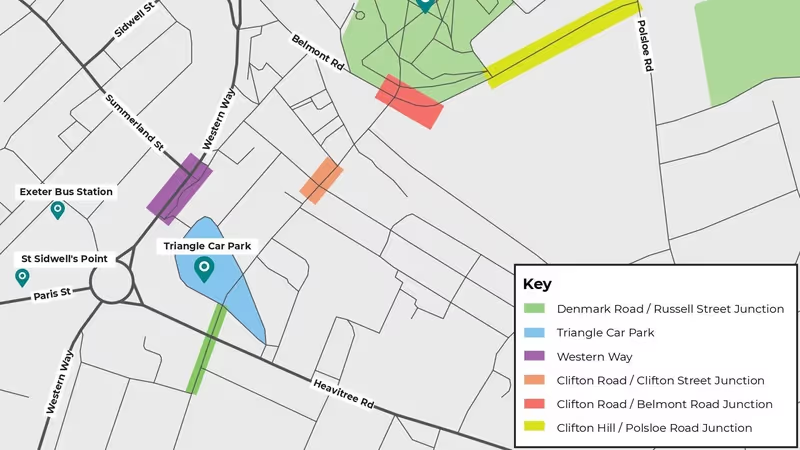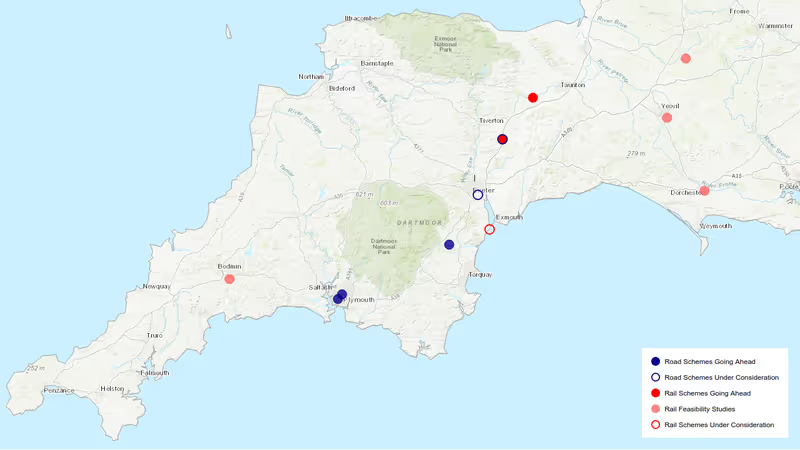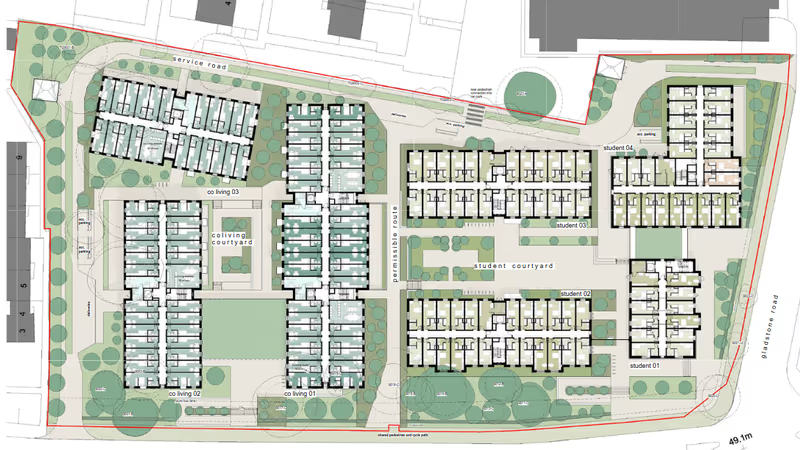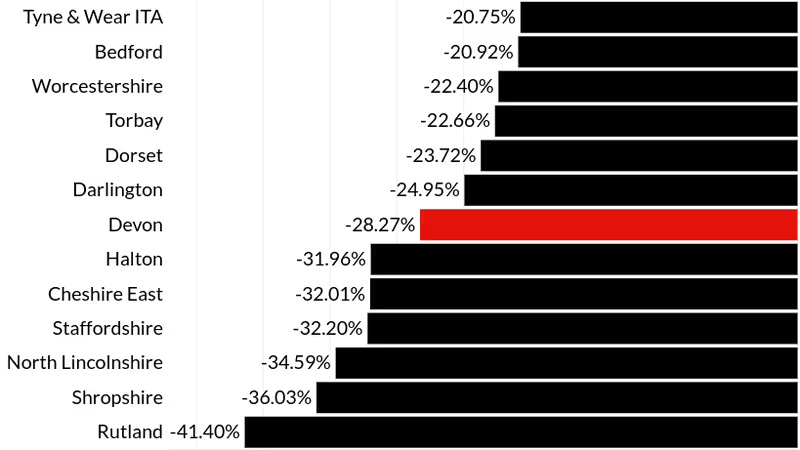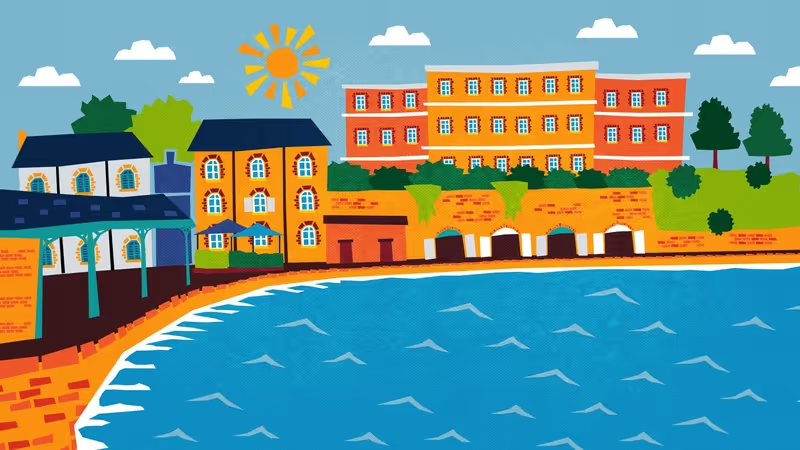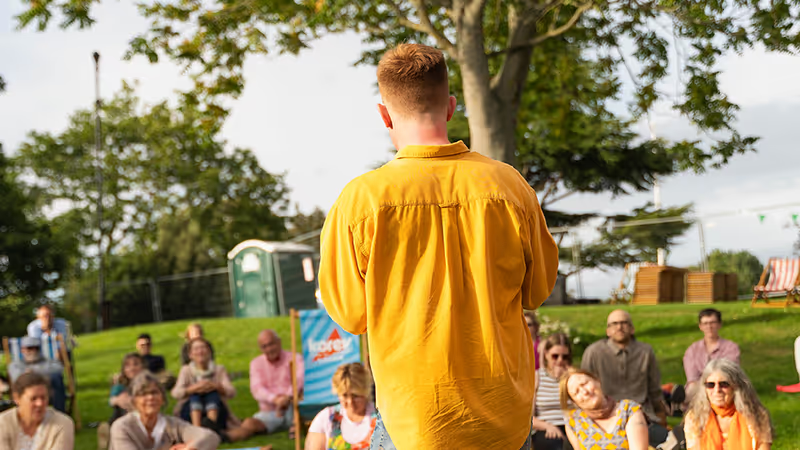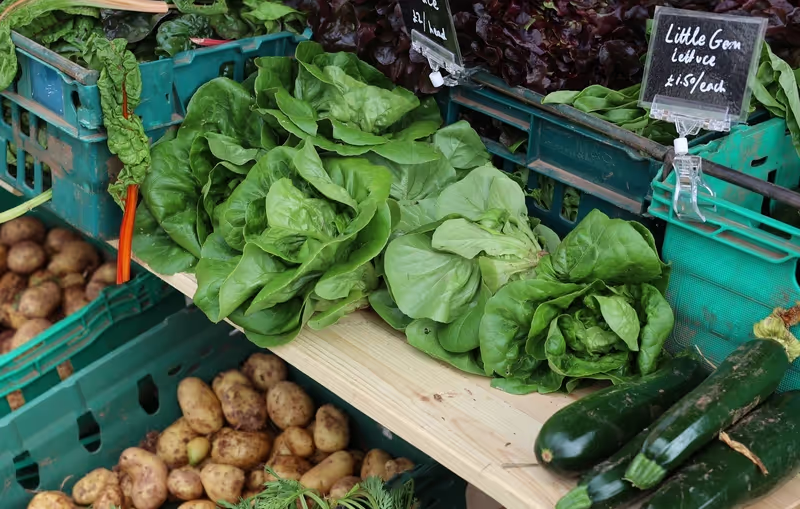Sir Thomas Dyke Acland stands proud beside the Roman wall in Northernhay Gardens, a century and a half after his death. The inscription on his statue pays tribute to his “generous heart and open hand, which have been ever ready to protect the weak, to relieve the needy, and to succour the oppressed”.
Five figures approach the statue in line, dressed in black utility-style clothing and matching communist caps. They assemble in formation and draw red ping-pong paddles from tool belts, displaying them against their chests. Turning, they look up towards four similarly-clad figures who have appeared at the top of the wall. They lift their paddles in the air as if in salute.
A paddle raised in reply signals the division of the ground crew into two. They stand legs astride and with arms outstretched, seeming to anticipate action. A whistle sounds and a long roll of bright red serge fabric is unfurled from the top of the wall. It is suspended against the wall for several moments before being dropped to the ground in a crumpled heap.
The serge is gathered then pulled taut before two of the figures begin to carefully roll the cloth into a tight wind. The wall crew arrive and all engage in smoothing out creases and kinks, picking at lint, fussing over their task. They take turns, wordless and workmanlike, occasionally pausing to survey their progress. Finally, the tightly wound roll is hoisted onto shoulders and all the figures depart.
 Preston Street Union present SERGE/SURGE at Cricklepit Mill
Preston Street Union present SERGE/SURGE at Cricklepit Mill
We just witnessed a performance of SERGE/SURGE by Preston Street Union, a group of Exeter-based artists formed in 2015. The piece was performed four times over the course of an afternoon in different locations around the city walls.
For the second performance we head to the footpath below Yaroslavl Bridge, halfway down to the quay. Tourists, dog walkers and passers-by stop to stare; some stand back, reluctant to stride past the action. When the whistle blows and the serge tumbles, because the wall here is shorter than before, the fabric rolls out across the grass, resembling a red carpet laid out for distinguished visitors.
A seldom-used footpath overlooking Cricklepit Mill is the site of the third performance. The confined space brings performers and audience closer together, as if participating in a piece of street theatre. We return to Northernhay Gardens for the final performance which, this time, takes place below the highest point of the castle wall. The ramparts here are toweringly tall. When the serge unfurls it brings to mind the image of a conquering army hanging their banners on newly-captured city walls.
The serge is then loosely gathered and lifted onto the shoulders of five of the figures, who parade past the onlookers to the conclusion of the performance. Trays of Exeter puddings, from a recipe by Mrs Beeton, are presented on a white tablecloth embroidered with the words “generous heart and open hand” in red thread. Audience, not performers, tuck in.
 Preston Street Union present SERGE/SURGE at Northernhay Gardens. Photo: RAMM.
Preston Street Union present SERGE/SURGE at Northernhay Gardens. Photo: RAMM.
Preston Street Union say these four performance sites roughly correspond with compass points. Options for sites were limited by many of the remaining sections of Roman wall being inaccessible as they sit on private land or beside car parks. The group’s focus on the complex history of Exeter’s walls is a response to RAMM’s 2019 migration theme, which is the basis of the commission brief.
The group was given special access to RAMM’s collections by the museum’s curators to enable the development of the piece. This led its members to consider Exeter’s historic wool trade, which brought many skilled migrants to the city from the fifteenth century to its peak in the eighteenth century. The group became interested in North American artefacts in the museum’s collection which contained fragments of red woollen cloth produced in the South West.
How did these pieces of fabric, which were originally intended for military uniforms, make it across the Atlantic? RAMM say they were traded to build relationships with indigenous peoples. According to Preston Street Union, they ultimately became incentives for the surrender of ancestral land to colonisers. Exeter’s walls similarly represent the capture and enclosure of indigenous land by foreign invaders. People and traded goods may have later flowed through these walls, but they were actually built to keep people out.
Hostile reaction to migrants is often expressed in describing their arrival as “surges”. They nevertheless bring demonstrable economic and cultural benefits. Preston Street Union presents the serge cloth that was largely responsible for Exeter’s historic wealth, much of which was created by skilled migrants, as a symbol that represents many things for the city. Not only can it do duty as a welcoming red carpet, it also signifies a metaphorical breach of the city walls, as well as a bridge across them that connects people inside with those without.
Preston Street Union proposes serge as a symbol for migration that is specific to Exeter. Like Thomas Acland’s dyed-in-the-wool establishment outlook, it has much to say about both the city’s present and past.
SERGE/SURGE was the first part of a two stage work commissioned by RAMM and supported by the Arts Council. The second part is due this autumn.

